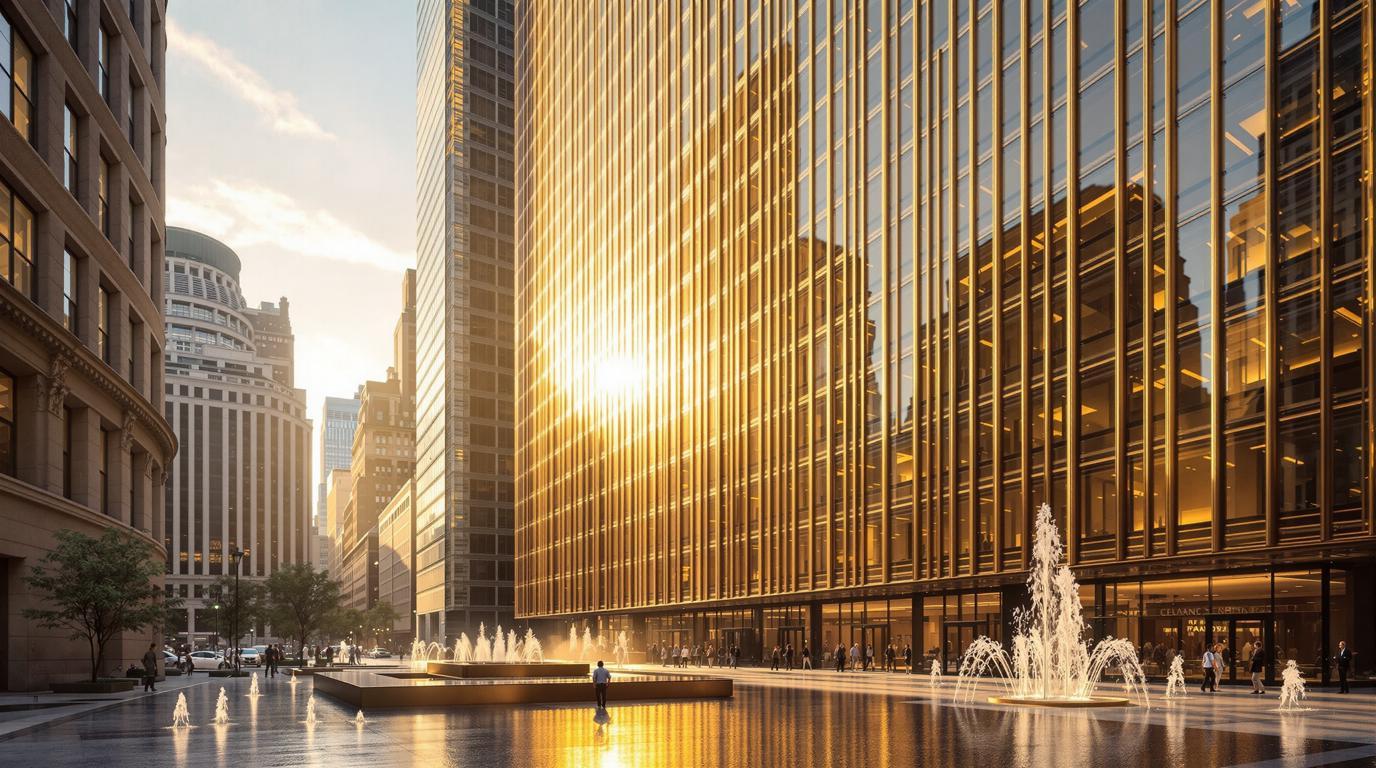The bronze facade of New York’s Seagram Building catches the early morning sun, transforming what might seem like just another Midtown skyscraper into a glowing amber sentinel. Standing 515 feet tall at 375 Park Avenue, this 38-story masterpiece revolutionized American architecture when it opened in 1958 and continues to captivate visitors with its understated elegance over six decades later.
A revolution in steel and glass
Designed by modernist pioneer Ludwig Mies van der Rohe with interior contributions from Philip Johnson, the Seagram Building represents the pinnacle of the International Style. What sets it apart isn’t excess, but restraint – its minimalist bronze and amber-tinted glass facade creating a geometric rhythm that feels simultaneously timeless and radical.
“The Seagram wasn’t just a building, it was a complete reimagining of what a skyscraper could be,” architectural historian Carol Willis notes. “Its influence on American skylines cannot be overstated.”
The plaza that changed city planning forever
Perhaps the building’s most revolutionary feature isn’t the tower itself but what’s in front of it – a spacious public plaza that created a gracious setback from bustling Park Avenue. This urban oasis with fountains and seating areas was so influential that New York City revised its zoning laws in 1961 to encourage similar public spaces throughout Manhattan.
Architectural details that reward the observant
Look closely at those bronze I-beams running vertically along the facade. While they appear to be supporting the structure, they’re actually non-structural elements added purely for aesthetic purposes – a perfect example of Mies’ famous dictum that “God is in the details.” For the best view, position yourself at the plaza’s northeast corner during golden hour when the sun makes the bronze elements positively glow.
A peek inside the landmark interior
While much of the building remains private office space, the lobby showcases travertine walls, marble features, and the original elegant aesthetic that earned it interior landmark designation. Until recently, it also housed the legendary Four Seasons Restaurant, where Manhattan’s power brokers lunched beneath lighting fixtures designed by Richard Kelly.
Photography tips from sunrise to sunset
Photographers flock to the Seagram for its perfect proportions and changing moods. Early mornings offer the cleanest shots with minimal crowds, while sunset bathes the western facade in golden light that plays beautifully against the bronze elements. For a unique perspective that rivals even Gaudi’s architectural marvels, try shooting upward from the plaza fountains.
The visionary behind the vision
Few know that we owe the Seagram’s architectural excellence to Phyllis Lambert, daughter of Seagram’s CEO Samuel Bronfman. When shown initial plans for a conventional skyscraper, the 27-year-old art historian wrote her father a scathing letter and convinced him to hire Mies instead – a decision that changed architectural history.
“I gave him a shock of recognition that a great building would be important for the Seagram Company,” Lambert later explained.
Neighborhood exploration beyond the icon
After admiring the Seagram, walk across Park Avenue to see Lever House, another modernist pioneer that helped transform Midtown. For a completely different architectural experience that offers escape from Manhattan’s crowds, stroll ten minutes to the neo-Gothic St. Patrick’s Cathedral.
For lunch, The Grill now occupies the former Four Seasons space, offering a luxurious dining experience amid meticulously preserved midcentury design. For something more affordable, follow local office workers to the hidden food hall in the nearby Lexington Passage.
A timeless lesson in urban possibility
In an era of ever more flamboyant skyscrapers competing for attention, the Seagram Building remains a testament to restraint and thoughtful urban integration. Its perfect proportions and human-scale plaza create a peaceful respite that feels as revolutionary today as it did in 1958.
Stand in its plaza on a spring afternoon, watching sunlight dance across its perfect grid, and you’ll understand why this midcentury masterpiece continues to inspire architects, visitors, and New Yorkers alike. In the constantly evolving Manhattan skyline, the Seagram Building isn’t just preserved history – it’s a living blueprint for thoughtful urban design.
